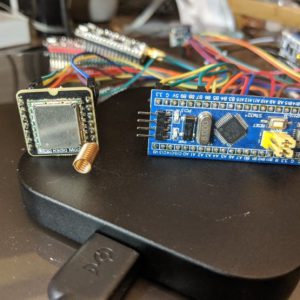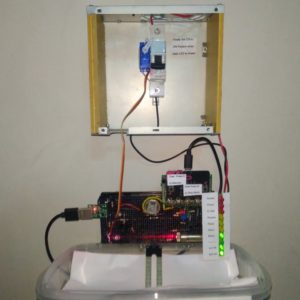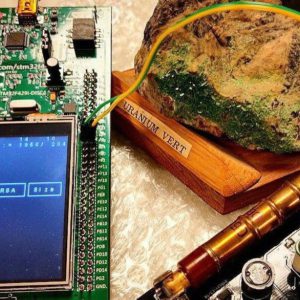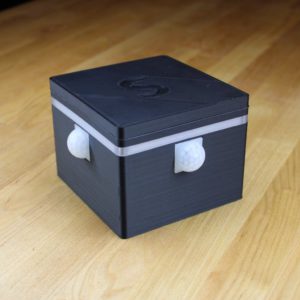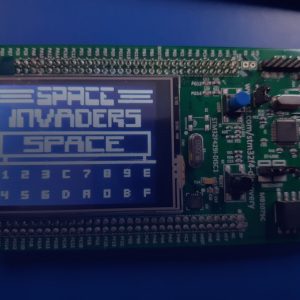
Make with Ada 2020: CHIP-8 Interpreter
Laurent Zhu's and Damien Grisonnet's project was accomplished for the EPITA Ada courses and won a finalist prize in the Make with Ada 2019/20 competition.
Laurent Zhu's and Damien Grisonnet's project was accomplished for the EPITA Ada courses and won a finalist prize in the Make with Ada 2019/20 competition.
Welcome to the Ada for micro:bit series where we look at simple examples to learn how to program the BBC micro:bit with Ada.
Welcome to the Ada for micro:bit series where we look at simple examples to learn how to program the BBC micro:bit with Ada.
Welcome to the Ada for micro:bit series where we look at simple examples to learn how to program the BBC micro:bit with Ada.
Starting today, AdaCore has put in place a Code of Conduct (CoC) to ensure a positive environment for everyone willing and wanting to interact with us. With the development of this blog, our twitter accounts, and our GitHub corporate account, there is more and more communication between AdaCore and a number of communities. In this Code of Conduct we want to explain how we are going to moderate the AdaCore-maintained community spaces with the goal of maintaining a welcoming, friendly environment.
Welcome to the Ada for micro:bit series where we look at simple examples to learn how to program the BBC micro:bit with Ada.
A code obfuscator is a method of sharing coding discussions of real-world examples without giving away proprietary or classified information. This article shows an example of an Ada obfuscator, written in the SPARK language and using the Libadalang library to intelligently hide names and text within the source.
Welcome to the Ada for micro:bit series where we look at simple examples to learn how to program the BBC micro:bit with Ada.
Welcome to the Ada for micro:bit series where we look at simple examples to learn how to program the BBC micro:bit with Ada.
This is the second post of a series about GNATcoverage and source code instrumentation. The previous post introduced how GNATcoverage worked originally and why we extended it to support source instrumentation-based code coverage computation. Let’s now see it in action in the most simple case: a basic program running on the host machine, i.e. the Linux/Windows machine that runs GNATcoverage itself.
This is the first post of a series about GNATcoverage and source code instrumentation.In order to make GNATcoverage viable in more contexts, we planned several years ago to add instrumentation support in GNATcoverage for Ada sources. This feature reached maturation recently and is available in the last Continuous Release, so it is a good time to present it with a blog series!
The FACE™ approach is a government-industry initiative for reducing defense system life cycle costs through portable and reusable software components. It consists of a technical approach — a software standard based on well-defined common interfaces — and a business strategy for encouraging the development and deployment of FACE conformant products.
Hedley Rainnie's project combines 6 different SoCs all programmed in Ada performing as a LoRa network. He also showcases a BLE bridge to a LoRa server. His project came about when him and his wife were musing about how to detect and deter unwanted garden visitors. This ongoing project won a finalist prize in the 2019/20 Make with Ada competition.
SPARK always being under development, new language features make it in every release of the tool, be they previously unsupported Ada features (like access types) or SPARK specific developments. However, new features generally take a while to make it into actual user code. The feature I am going to present here is in my experience an exception, as it was used both internally and by external users before it made it into any actual release. It was designed to enhance the verification of data initialization, whose limitations have been a long standing issue in SPARK.
Shahariar's project ensures safety against electrical fire or shock during an earthquake, flood, gas leakage or fire breakout by disconnecting the mains with a smart circuit breaker. Additionally, this project won a finalist prize in the 2019/20 Make with Ada competition.
Team CryptAda's project collects entropy, manages an entropy pool, implements a homemade PRNG, and generates RSA keys directly on the board with an accent on security. Additionally, this project won a finalist prize in the 2019/20 Make with Ada competition.
John Singleton's The SmartBase makes your existing adjustable bed safer and easier to use by adding voice control and safe (and fun!) LED underbed lighting! Additionally, this project won first place prize in the 2019/20 Make with Ada competition.
Last year, I started evaluating programming languages for a formally-verified operating system. I've been developing software for a while, but only recently began work in high integrity software development and formal methods. There are several operating system projects, like the SeL4 microkernel and the Muen separation kernel, that make use of formal verification. But I was interested in using a formally-verified language to write a general-purpose OS - an environment for abstracting the underlying hardware while acting as an arbiter for running the normal applications we're used to.
We are happy to announce that the GNAT Community 2020 release is now available! Read the post for access to download and to find out about this year's release highlights.
This blog entry describes the transformation of an Ada stack ADT into a completely proven SPARK implementation that relies on static verification instead of run-time enforcement of the abstraction’s semantics. We will prove that there are no reads of unassigned variables, no array indexing errors, no range errors, no numeric overflow errors, no attempts to push onto a full stack, no attempts to pop from an empty stack, that subprogram bodies implement their functional requirements, and so on. As a result, we get a maximally robust implementation of a reusable stack abstraction providing all the facilities required for production use.





